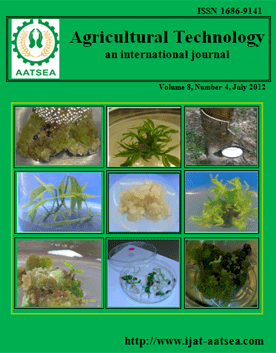ThaiScience
ThaiScience
INTERNATIONAL JOURNAL OF AGRICULTURAL TECHNOLOGY
Volume 14, No. 07, Month DECEMBER, Year 2018, Pages 2051 - 2066
Dna barcoding of two commercially important fish families (carangidae and lutjanidae) collected from cuyo, palawan, philippines
Templonuevo, R. M., Alcantara, S., Juanico, C. S. and Yambot, A.
Abstract Download PDF
DNA barcoding has been proven as an effective and accurate tool for species identification all throughout the world. In this study, the technique was used to molecularly identify different species of the two major commercially important fish families (Carangidae and Lutjanidae) collected in Cuyo Island, Palawan. The island is a part of Coral triangle which is well recognized as a global apogee of marine biodiversity. It is also a major source of commercially important fishes being shipped to other neighboring provinces including Metro Manila. An estimated >600 base pair region of the mitochondrial cytochrome c oxidase subunit I (COI) gene was amplified using four sets of universal primers. Fourteen high quality COI sequences were amplified and submitted to GenBank and IBOL database representing 7 species of carangids and 7 species of snappers. The generated sequences were compared to the published COI sequences in public databases and revealed 99-100% identity. Genetic distances were also calculated using Kimura-two parameter (K2P) model along with the construction of Neighbour-joining tree to support the identification. Overall, K2P distance was 20.3% with 22.5% and 20.5% genetic distances corresponding to interfamily and interorder divergences. A strong, cohesive and distinct clusters representing the taxonomic status of each of the species was also evident. Among the molecularly identified fishes in the island, one species of trevally, Caranx sexfasciatus was tagged with “decreasing population” by International Union for the Conservation of Nature (IUCN). The inventory of these commercially important aquatic species in Cuyo Island, Palawan is important to identify their sources for export, domestic consumption and aquaculture purposes. It is also vital in implementing efficient assessment and management of the stocks. With the baseline information that is generated by the study, the fisherfolks will know the richness of their resources.
Keywords
molecular species identification, cytochrome c oxidase subunit 1, genetic divergenceINTERNATIONAL JOURNAL OF AGRICULTURAL TECHNOLOGY
Published by : Association of Agricultural Technology in Southeast Asia (AATSEA)
Contributions welcome at : http://www.ijat-aatsea.com
